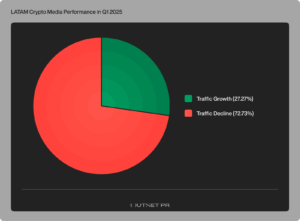
Stablecoins are an attractive proposition to anyone who wishes to maintain exposure to cryptocurrencies, while avoiding being caught in the volatility that is associated with them. On certain days, the largest currencies by Market Capitalization can typically gain or lose 5 to 10%. This can be too much for investors not blessed with “diamond hands”. Stablecoins allow market participants to be exposed to the markets and to participate in Decentralized Finance (Stablecoins can be staked, for example) while mitigating Volatility.
Stablecoins can be defined as cryptocurrencies that aim, through various means, to maintain a stable value. Stablecoins inhabit the same realm as Bitcoin: they are electronic, they can be exchanged peer to peer and they are not issued by central banks.
The demand for Stablecoins is nothing short of amazing. The total supply for stablecoins grew by 493%, from 5.9 billions dollars at the start of 2020, to approximately 35 billion dollars at the start of 2021!
One factor that contributed to fan the fires of market demand for Stablecoins is Covid-19. The Bank for International Settlements, or BIS, highlighted recently in a report about Stablecoins that public concerns about viral transmission through cash led to a surge in the use of Stablecoins.
Today, the overall market capitalization for Stablecoins is more than 100 billion US dollars, following a massive wave of stablecoin issuance at the beginning of the year.

There are four main types of Stablecoins: 1. Stablecoins backed by Fiat Currency 2. Stablecoins backed by Commodities, 3. Stablecoins backed by other cryptocurrencies, 4. Algorithmic Stablecoins.
- 1. Stablecoins backed by Fiat: Certain Stablecoins, such as Tether’s USDT, are backed by reserves of real currencies. What this means in plain language is that these tokens possess an underlying asset: real currency that is held in reserves and that guarantees their price.
- 2. Stablecoins backed by Commodities: Certain Stablecoins are backed by reserves of Gold, Silver or Oil. Tether Gold, Paxos Gold and SilverToken, a stablecoin which is redeemable at all times for Silver, are brilliant examples of this. Certain Stablecoins are backed by baskets of commodities: Tiberius Coin (TCX) is backed by a combination of 7 precious metals used in technology hardware. Stablecoins backed by commodities, especially those backed by Oil reserves, are more susceptible to price movements, but since commodities are expected to increase in value over the long run, investors can hold these stablecoins and redeem them later on, when the underlying commodity has appreciated sufficiently.
- 3. Stablecoins backed by Cryptocurrencies: These Stablecoins are backed by other cryptocurrencies, such as Ethereum. Their price is a function of the value of the underlying crypto asset. Because the value of the underlying asset can be volatile, they are typically overcollateralized to guarantee that the price will stay as stable as possible.
- 4. Algorithmic Stablecoins: Algorithmic Stablecoins, surprisingly, are not backed by fiat currencies or by commodities. Rather, they aim to maintain their peg by minting or burning tokens. If the Stablecoins’s price falls below a certain target price, say below 1.00$, the algorithm will immediately respond by burning tokens in order to introduce artificial scarcity, bringing back the price in line with the target. Some of the most popular algorithmic currencies on the market include Ampleforth (AMPL), Empty Set Dollar (ESD), and Frax (FRAX).

Over 200 teams in the blockchain sector, responding to that demand, are currently developing or have deployed Stablecoins.
Some of the most popular Stablecoins include:
- 1. Tether’s USDT: Tether, launched in 2014, is a digital token pegged to a number of Fiat currencies (US dollar, Euro and Offshore Chinese Yuan). Tether has been successfully deployed on the following networks: Bitcoin Omni Layer, Ethereum, EOS, Tron, Algorand, SLP and OMG. There has been some controversy over the fact that Tether is not fully backed by cash reserves, however Tether custodians insist the token is always 100% backed by reserves which include traditional currency and cash equivalents.
- 2. USDC: USDC, a multi-issuer Stablecoin fully backed by cash reserves, is the second largest Stablecoin by market capitalization, after Tether’s USDT. There are currently 25 Billion dollars of USDC in circulation, and on-chain transfers have reached a staggering 797 billion dollars. USDC is regulated by financial institutions, redeemable at all times for US dollars on a 1:1 basis. Every month, USDC’s reserves are verified by Grant Thornton LLP.
- 3. DAI, running on the MakerDAO protocol, is an algorithmic Stablecoin. The Maker team built a platform that ensures DAI is backed at all times through a dynamic system of over-collateralized debt positions (in short, collateralized debt positions lock up a user’s collateral), autonomous feedback mechanisms and incentives. DAI, first introduced to the world in 2015, aims to maintain an exact ratio of one-to-one with the US dollar.
- 4. Launched in March of 2020, AUDT is a Stablecoin backed by the australian dollar. This token, an initiative of Chrono.Tech, an Australian firm hell bent on disrupting and revolutionizing Human Resources and the World of Work in general, is regulated and fully compliant with AUSTRAC, Australia’s financial intelligence agency. AUDT is regularly audited by AUSTRAC-registered third-party companies.

Closing Thought
As Digital Tokens, which can be exchanged peer to peer, stablecoins inhabit the same realm as Cryptocurrencies. Most Stablecoins are centralized: users need to trust the issuers, who sometimes, such as in the case of USDC’s Circle, openly publicize the fact they build backdoors into the currencies to mitigate the possibility of illicit transactions (Circle confirmed in July of 2020 that it froze $100,000 of USD Coin at the demand of law enforcement). Stablecoins come in four varieties: backed by fiat, commodities, backed by cryptocurrencies and algorithmic stablecoins. Stablecoins are typically used to mitigate the effects of market volatility on one’s portfolio and for payments.
I have been into Cryptocurrency since early 2017. I am a very experienced investor, and have made a lot of money from investing in Bitcoin and other digital currencies. I am also a very popular author, and my work has been featured on sites like Forbes, Huffington Post, Business Insider, and more. I am currently working on a book about Cryptocurrency investing, which will be released later this year. In my free time, I write articles and blog posts about the industry for my followers.








